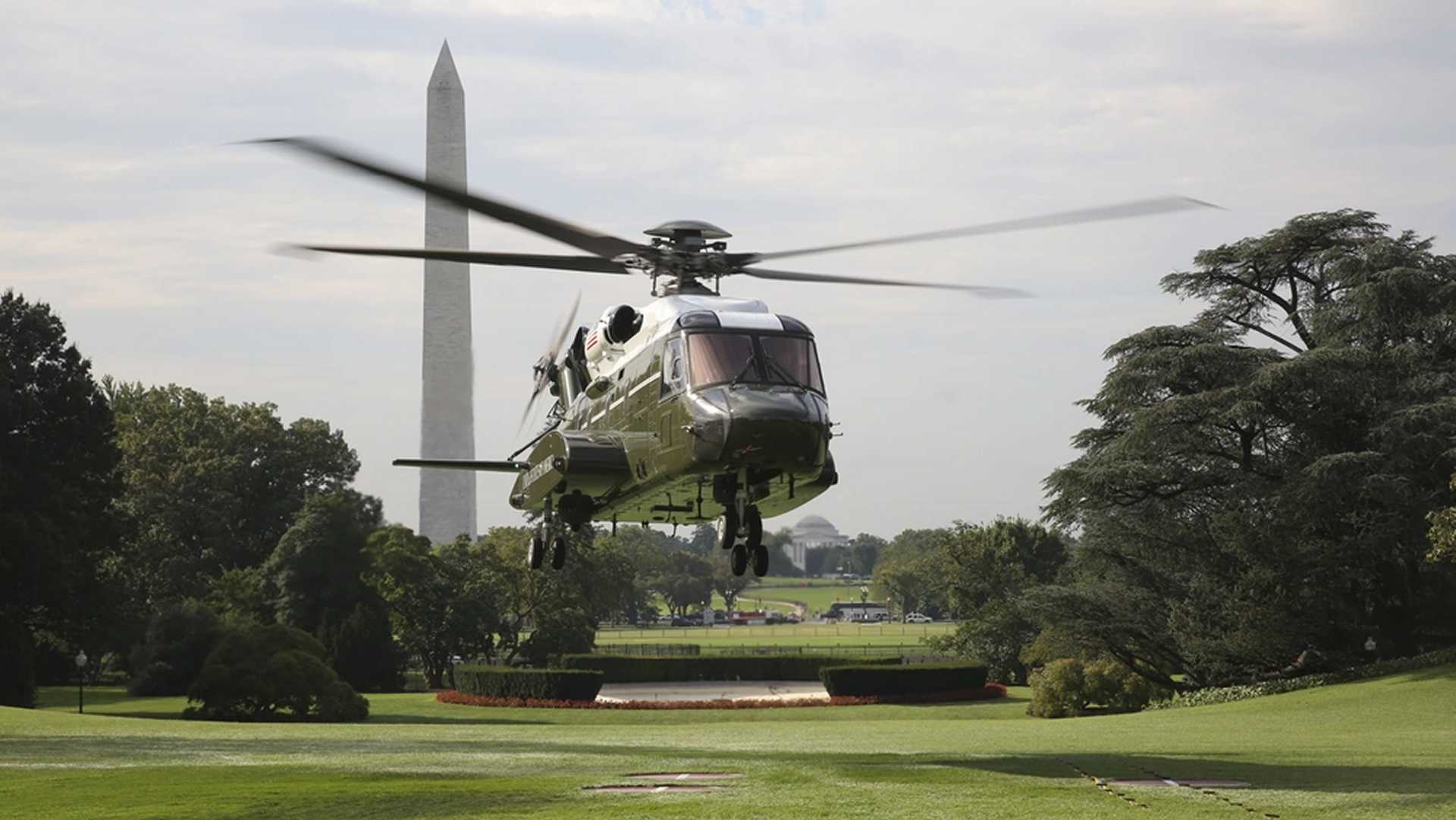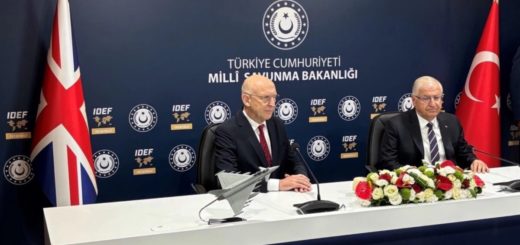Donald Trump to fly aboard the VH-92A Patriot as the new Marine One helicopter

{loadposition bannertop}
{loadposition sidebarpub}
As reported by Acepilot Aviation on January 20, 2025, the VH-92A Patriot has now replaced the VH-3D Sea King and VH-60N White Hawk as the primary Marine One helicopter used by the President of the United States. The VH-92A, based on the Sikorsky S-92, replaces the VH-3D, introduced in 1974 and derived from the Sikorsky S-61, and the VH-60N, which entered service in 1989 and was based on the Sikorsky UH-60 Black Hawk and SH-60 Seahawk platforms. Both legacy helicopters, extensively modified throughout their service lives, exceeded their original 20-year service expectations.Follow Army Recognition on Google News at this link
The VH-92A Patriot, based on the Sikorsky S-92, first flew on July 28, 2017, undergoing extensive testing, including Initial Operational Test and Evaluation (IOT&E), which concluded in 2021, and the fleet now comprises a total of 23 units. (Picture source: US DoD)
Marine One, the call sign for any U.S. Marine Corps aircraft carrying the President, has been in use since 1957. President Dwight D. Eisenhower first used a Bell UH-13J Sioux helicopter for short-range travel to his summer home in Pennsylvania, followed by the Sikorsky UH-34 Seahorse. The Marine Corps assumed exclusive control of Marine One operations in 1976, designating the White House South Lawn as the primary landing zone.
Over the decades, the fleet, managed by Marine Helicopter Squadron One (HMX-1), has included the VH-3A, VH-3D, and VH-60N models. Operating from MCAF Quantico, Virginia, and Naval Support Facility Anacostia, the fleet supports both domestic and international missions. Procedures include flying in decoy formations and employing countermeasures like AN/ALQ-144A infrared jammers and radar-guided missile defenses.
The prefix “VH” in U.S. military aircraft designations stands for “VIP Helicopter,” identifying rotary-wing aircraft configured specifically for transporting very important persons, such as the President. The “V” denotes its VIP transport role, and the “H” indicates it is a helicopter. This designation is used for helicopters like the VH-3D Sea King, VH-60N White Hawk, and VH-92A Patriot, which have been assigned to serve as Marine One, the call sign for any U.S. Marine Corps aircraft carrying the President.
The VH-3D Sea King, introduced in 1974, was a twin-engine helicopter derived from the Sikorsky S-61 platform, replacing the VH-3A in the Marine One fleet. It featured a fuselage length of 16.5 meters, an overall length of 21.9 meters, and a height of 5.1 meters, with a maximum takeoff weight of 9,752 kilograms. Powered by two General Electric T58-GE-400B turboshaft engines, the VH-3D could reach a maximum speed of 259 km/h (140 knots).
The VH-3D was equipped with navigation systems, GPS, TCAS, crash-survivable flight data recorders, and EMP-hardened communication systems for secure and non-secure operations. The helicopter supported day/night and all-weather missions, with systems periodically upgraded to meet evolving operational needs. However, increased weight from added capabilities limited further modifications due to its aging airframe, reducing operational effectiveness.
The VH-60N White Hawk, entering service in 1989, was developed as a variant of the Sikorsky UH-60 Black Hawk, incorporating features from the SH-60 Seahawk, allowing it to achieve a cruising speed of 278 km/h. (Picture source: US DoD)
The VH-60N White Hawk, entering service in 1989, was developed as a variant of the Sikorsky UH-60 Black Hawk, incorporating features from the SH-60 Seahawk. It had a fuselage length of 19.8 meters, a rotor diameter of 16.4 meters, and a maximum takeoff weight of 9,979 kilograms. Powered by two General Electric T700-GE-401C turboshaft engines, it achieved a cruising speed of 278 km/h (150 knots).
Designed for VIP transport, it was equipped with advanced avionics, GPS navigation, and EMP-resistant communication systems for secure and non-secure data transmission. Though unarmed, it featured infrared countermeasures and radar jammers to defend against missile threats. Despite fulfilling its role effectively, limitations in range, payload capacity, and ability to integrate new technologies led to its replacement.
The VH-92A Patriot was developed following the cancellation of the VH-71 Kestrel project, with Sikorsky Aircraft and Lockheed Martin awarded the contract in 2014. Derived from the Sikorsky S-92 platform, the VH-92A features a fuselage length of 17.1 meters, a rotor diameter of 17.2 meters, and a height of 4.7 meters. With a maximum takeoff weight of 12,565 kilograms, it is powered by two General Electric CT7-8A turboshaft engines, each providing 1,880 kW of power. The helicopter achieves a maximum speed of 306 km/h (165 knots) and a service ceiling of 4,300 meters, with seating for up to 14 passengers and an executive interior tailored for its mission.
The VH-92A is equipped with a Mission Communication System (MCS) for simultaneous secure and non-secure voice and data transmission, as well as EMP-hardened electronics. It features survivability measures such as flares and chaff for missile defense, along with redundant flight controls for reliability. Meeting FAA certification standards, the platform integrates military-specific features and is transportable via a single C-17 Globemaster, enabling deployment to global locations, including austere environments.
The VH-92A first flew on July 28, 2017, undergoing extensive testing, including Initial Operational Test and Evaluation (IOT&E), which concluded in 2021. The United States Marine Corps declared Initial Operational Capability (IOC) on December 28, 2021. The fleet, consisting of 23 helicopters, including two test units, was delivered between 2019 and 2021. The VH-92A was first used as Marine One on August 19, 2024, during President Joe Biden’s travel to the Democratic National Convention. Compared to the VH-3D Sea King and VH-60N White Hawk, the VH-92A addresses the weight and performance limitations of its predecessors while meeting modern communication, transport, and survivability requirements with greater range and payload capacity.
The VH-3D Sea King, introduced in 1974, was a twin-engine helicopter derived from the Sikorsky S-61 platform. Its systems were periodically upgraded to meet evolving operational requirements. However, the added weight from these upgrades, combined with its aging airframe, limited further modifications and reduced its operational effectiveness. (Picture source: White House)

{loadposition bannertop}
{loadposition sidebarpub}
As reported by Acepilot Aviation on January 20, 2025, the VH-92A Patriot has now replaced the VH-3D Sea King and VH-60N White Hawk as the primary Marine One helicopter used by the President of the United States. The VH-92A, based on the Sikorsky S-92, replaces the VH-3D, introduced in 1974 and derived from the Sikorsky S-61, and the VH-60N, which entered service in 1989 and was based on the Sikorsky UH-60 Black Hawk and SH-60 Seahawk platforms. Both legacy helicopters, extensively modified throughout their service lives, exceeded their original 20-year service expectations.
Follow Army Recognition on Google News at this link
The VH-92A Patriot, based on the Sikorsky S-92, first flew on July 28, 2017, undergoing extensive testing, including Initial Operational Test and Evaluation (IOT&E), which concluded in 2021, and the fleet now comprises a total of 23 units. (Picture source: US DoD)
Marine One, the call sign for any U.S. Marine Corps aircraft carrying the President, has been in use since 1957. President Dwight D. Eisenhower first used a Bell UH-13J Sioux helicopter for short-range travel to his summer home in Pennsylvania, followed by the Sikorsky UH-34 Seahorse. The Marine Corps assumed exclusive control of Marine One operations in 1976, designating the White House South Lawn as the primary landing zone.
Over the decades, the fleet, managed by Marine Helicopter Squadron One (HMX-1), has included the VH-3A, VH-3D, and VH-60N models. Operating from MCAF Quantico, Virginia, and Naval Support Facility Anacostia, the fleet supports both domestic and international missions. Procedures include flying in decoy formations and employing countermeasures like AN/ALQ-144A infrared jammers and radar-guided missile defenses.
The prefix “VH” in U.S. military aircraft designations stands for “VIP Helicopter,” identifying rotary-wing aircraft configured specifically for transporting very important persons, such as the President. The “V” denotes its VIP transport role, and the “H” indicates it is a helicopter. This designation is used for helicopters like the VH-3D Sea King, VH-60N White Hawk, and VH-92A Patriot, which have been assigned to serve as Marine One, the call sign for any U.S. Marine Corps aircraft carrying the President.
The VH-3D Sea King, introduced in 1974, was a twin-engine helicopter derived from the Sikorsky S-61 platform, replacing the VH-3A in the Marine One fleet. It featured a fuselage length of 16.5 meters, an overall length of 21.9 meters, and a height of 5.1 meters, with a maximum takeoff weight of 9,752 kilograms. Powered by two General Electric T58-GE-400B turboshaft engines, the VH-3D could reach a maximum speed of 259 km/h (140 knots).
The VH-3D was equipped with navigation systems, GPS, TCAS, crash-survivable flight data recorders, and EMP-hardened communication systems for secure and non-secure operations. The helicopter supported day/night and all-weather missions, with systems periodically upgraded to meet evolving operational needs. However, increased weight from added capabilities limited further modifications due to its aging airframe, reducing operational effectiveness.

The VH-60N White Hawk, entering service in 1989, was developed as a variant of the Sikorsky UH-60 Black Hawk, incorporating features from the SH-60 Seahawk, allowing it to achieve a cruising speed of 278 km/h. (Picture source: US DoD)
The VH-60N White Hawk, entering service in 1989, was developed as a variant of the Sikorsky UH-60 Black Hawk, incorporating features from the SH-60 Seahawk. It had a fuselage length of 19.8 meters, a rotor diameter of 16.4 meters, and a maximum takeoff weight of 9,979 kilograms. Powered by two General Electric T700-GE-401C turboshaft engines, it achieved a cruising speed of 278 km/h (150 knots).
Designed for VIP transport, it was equipped with advanced avionics, GPS navigation, and EMP-resistant communication systems for secure and non-secure data transmission. Though unarmed, it featured infrared countermeasures and radar jammers to defend against missile threats. Despite fulfilling its role effectively, limitations in range, payload capacity, and ability to integrate new technologies led to its replacement.
The VH-92A Patriot was developed following the cancellation of the VH-71 Kestrel project, with Sikorsky Aircraft and Lockheed Martin awarded the contract in 2014. Derived from the Sikorsky S-92 platform, the VH-92A features a fuselage length of 17.1 meters, a rotor diameter of 17.2 meters, and a height of 4.7 meters. With a maximum takeoff weight of 12,565 kilograms, it is powered by two General Electric CT7-8A turboshaft engines, each providing 1,880 kW of power. The helicopter achieves a maximum speed of 306 km/h (165 knots) and a service ceiling of 4,300 meters, with seating for up to 14 passengers and an executive interior tailored for its mission.
The VH-92A is equipped with a Mission Communication System (MCS) for simultaneous secure and non-secure voice and data transmission, as well as EMP-hardened electronics. It features survivability measures such as flares and chaff for missile defense, along with redundant flight controls for reliability. Meeting FAA certification standards, the platform integrates military-specific features and is transportable via a single C-17 Globemaster, enabling deployment to global locations, including austere environments.
The VH-92A first flew on July 28, 2017, undergoing extensive testing, including Initial Operational Test and Evaluation (IOT&E), which concluded in 2021. The United States Marine Corps declared Initial Operational Capability (IOC) on December 28, 2021. The fleet, consisting of 23 helicopters, including two test units, was delivered between 2019 and 2021. The VH-92A was first used as Marine One on August 19, 2024, during President Joe Biden’s travel to the Democratic National Convention. Compared to the VH-3D Sea King and VH-60N White Hawk, the VH-92A addresses the weight and performance limitations of its predecessors while meeting modern communication, transport, and survivability requirements with greater range and payload capacity.

The VH-3D Sea King, introduced in 1974, was a twin-engine helicopter derived from the Sikorsky S-61 platform. Its systems were periodically upgraded to meet evolving operational requirements. However, the added weight from these upgrades, combined with its aging airframe, limited further modifications and reduced its operational effectiveness. (Picture source: White House)







